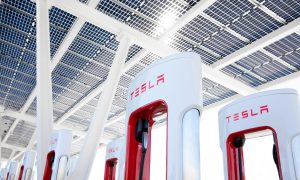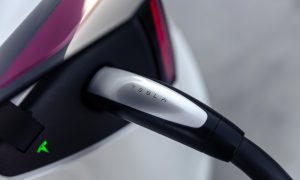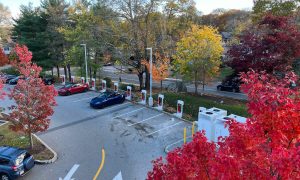News
Why Tesla wants to open its Supercharger to the competition
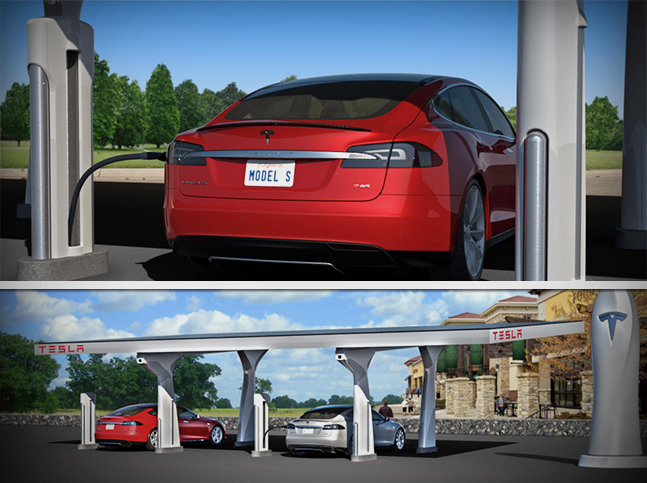
In a very bold move, Musk is considering opening the company’s intellectual property (IP) for its Superchargers inviting the competition in, breaking away from outmoded fights.
Just when you think you had Tesla figured out, Elon Musk, Tesla Motors’ CEO, throws in another bit to the overall electric vehicle (EV) picture, once again, changes the background.
Tesla embraces openness
The one thing almost all companies have in common is secrecy. Carmakers are no different and jealously keep trade secrets. What makes Tesla Motors unique and part of its success, is its engineering, which is off limit to GM, Ford and the rest. Companies edge out their products and services by keeping their know-how in-house in order to dominate a market, or a part of it. Even if some things are off limits, all carmakers pull apart others’ cars to see how they were engineered. If this was an effective strategy until now, it has its limits. Pushed to the maximum, it strangles markets and consumers are left to pay the price. There is less choice and innovations. Eventually, someone has to break the trends and breath new life. Is this what Tesla is trying to do? Not so fast.
Supercharge me and everyone else
Elon Musk says someone has to take the first step and Tesla Motors is the company to show the way forward. We couldn’t agree more. We’re tired of living in the stone age, we want a modern world that holds up to its promise and potential.
A company opening up the IP of its Supercharger network to create a “standard technical specification that other electric car makers can adopt,” as Engadget puts it, is a bold move forward.
But is it naïve, or simply a brilliant move forward when the competition is locked in a futile fight? The question is, who stands to gain the most from such a move.
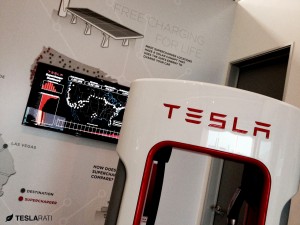 Tesla is willing give away some of its IP in order for other makers to charge at its Superchargers. It also hopes to by-pass the CHAdeMO and SAE fight, as well as the upcoming Chinese charging network with its own protocol. Tesla might charge a modest fee return, but that is nothing for such a juggernaut. Musk sees, as most of us do, that the automobile industry is in disarray and still grapples over how to create a thriving business model with electric vehicles (EV). If the industry, used to making internal combustion engines (ICE), it doesn’t know what to do with an electric motor and batteries, even less with a charging network. Luckily, Tesla took a lead early there.
Tesla is willing give away some of its IP in order for other makers to charge at its Superchargers. It also hopes to by-pass the CHAdeMO and SAE fight, as well as the upcoming Chinese charging network with its own protocol. Tesla might charge a modest fee return, but that is nothing for such a juggernaut. Musk sees, as most of us do, that the automobile industry is in disarray and still grapples over how to create a thriving business model with electric vehicles (EV). If the industry, used to making internal combustion engines (ICE), it doesn’t know what to do with an electric motor and batteries, even less with a charging network. Luckily, Tesla took a lead early there.
So far Nissan is one of the only carmaker to grow the network with CHAdeMO chargers at its dealerships. Then, there is the SAE Combo standard trying to muscle its way in, fighting against CHAdeMO. The absurd fight ended last year with a standstill, forcing once again consumers to choose one or the other, losing in the short run. So what can Tesla Motors do with its own Supercharger system watching another Chinese charger standard take advantage of the confusion? Open its doors and leapfrog the infighting competitors. It works to everyone’s advantage and the company comes out on top. Simple, brilliant, and so Tesla.
Standards come in two ways, officially, or de facto. For those of you seasoned enough to remember, we once had a choice between a good quality Betamax, and a rather inferior VHS system. VHS became a de facto standard after a deep pocket campaigns turned a generation on to it. The same almost happened to DVD recording, and there are plenty of other examples still. Tesla opening its IP doors to the competition is a bold move above the fray, and one we can be happy about since it will benefit the entire EV community. Hopefully, it will also stop this infighting caveman mentality companies have, pushing their visions on consumers. When you get down to it, what’s important is to have a nationwide charging network that works for as many cars as possible, regardless of makers, backers or other financial interests. Tesla does it again.
News
Tesla launches in India with Model Y, showing pricing will be biggest challenge
Tesla finally got its Model Y launched in India, but it will surely come at a price for consumers.

Tesla has officially launched in India following years of delays, as it brought its Model Y to the market for the first time on Tuesday.
However, the launch showed that pricing is going to be its biggest challenge. The all-electric Model Y is priced significantly higher than in other major markets in which Tesla operates.
On Tuesday, Tesla’s Model Y went up for sale for 59,89,000 rupees for the Rear-Wheel Drive configuration, while the Long Range Rear-Wheel Drive was priced at 67,89,000.
This equates to $69,686 for the RWD and $78,994 for the Long Range RWD, a substantial markup compared to what these cars sell for in the United States.
🚨 Here’s the difference in price for the Tesla Model Y in the U.S. compared to India.
🚨 59,89,000 is $69,686
🚨 67,89,000 is $78,994 pic.twitter.com/7EUzyWLcED— TESLARATI (@Teslarati) July 15, 2025
Deliveries are currently scheduled for the third quarter, and it will be interesting to see how many units they can sell in the market at this price point.
The price includes tariffs and additional fees that are applied by the Indian government, which has aimed to work with foreign automakers to come to terms on lower duties that increase vehicle cost.
Tesla Model Y seen testing under wraps in India ahead of launch
There is a chance that these duties will be removed, which would create a more stable and affordable pricing model for Tesla in the future. President Trump and Indian Prime Minister Narendra Modi continue to iron out those details.
Maharashtra Chief Minister Devendra Fadnavis said to reporters outside the company’s new outlet in the region (via Reuters):
“In the future, we wish to see R&D and manufacturing done in India, and I am sure at an appropriate stage, Tesla will think about it.”
It appears to be eerily similar to the same “game of chicken” Tesla played with Indian government officials for the past few years. Tesla has always wanted to enter India, but was unable to do so due to these import duties.
India wanted Tesla to commit to building a Gigafactory in the country, but Tesla wanted to test demand first.
It seems this could be that demand test, and the duties are going to have a significant impact on what demand will actually be.
Elon Musk
Tesla ups Robotaxi fare price to another comical figure with service area expansion
Tesla upped its fare price for a Robotaxi ride from $4.20 to, you guessed it, $6.90.

Tesla has upped its fare price for the Robotaxi platform in Austin for the first time since its launch on June 22. The increase came on the same day that Tesla expanded its Service Area for the Robotaxi ride-hailing service, offering rides to a broader portion of the city.
The price is up from $4.20, a figure that many Tesla fans will find amusing, considering CEO Elon Musk has used that number, as well as ’69,’ as a light-hearted attempt at comedy over the past several years.
Musk confirmed yesterday that Tesla would up the price per ride from that $4.20 point to $6.90. Are we really surprised that is what the company decided on, as the expansion of the Service Area also took effect on Monday?
But the price is now a princely $6.90, as foretold in the prophecy 😂
— Elon Musk (@elonmusk) July 14, 2025
The Service Area expansion was also somewhat of a joke too, especially considering the shape of the new region where the driverless service can travel.
I wrote yesterday about how it might be funny, but in reality, it is more of a message to competitors that Tesla can expand in Austin wherever it wants at any time.
Tesla’s Robotaxi expansion wasn’t a joke, it was a warning to competitors
It was only a matter of time before the Robotaxi platform would subject riders to a higher, flat fee for a ride. This is primarily due to two reasons: the size of the access program is increasing, and, more importantly, the service area is expanding in size.
Tesla has already surpassed Waymo in Austin in terms of its service area, which is roughly five square miles larger. Waymo launched driverless rides to the public back in March, while Tesla’s just became available to a small group in June. Tesla has already expanded it, allowing new members to hail a ride from a driverless Model Y nearly every day.
The Robotaxi app is also becoming more robust as Tesla is adding new features with updates. It has already been updated on two occasions, with the most recent improvements being rolled out yesterday.
Tesla updates Robotaxi app with several big changes, including wider service area
News
Tesla Model Y and Model 3 dominate U.S. EV sales despite headwinds
Tesla’s two mainstream vehicles accounted for more than 40% of all EVs sold in the United States in Q2 2025.

Tesla’s Model Y and Model 3 remained the top-selling electric vehicles in the U.S. during Q2 2025, even as the broader EV market dipped 6.3% year-over-year.
The Model Y logged 86,120 units sold, followed by the Model 3 at 48,803. This means that Tesla’s two mainstream vehicles accounted for 43% of all EVs sold in the United States during the second quarter, as per data from Cox Automotive.
Tesla leads amid tax credit uncertainty and a tough first half
Tesla’s performance in Q2 is notable given a series of hurdles earlier in the year. The company temporarily paused Model Y deliveries in Q1 as it transitioned to the production of the new Model Y, and its retail presence was hit by protests and vandalism tied to political backlash against CEO Elon Musk. The fallout carried into Q2, yet Tesla’s two mass-market vehicles still outsold the next eight EVs combined.
Q2 marked just the third-ever YoY decline in quarterly EV sales, totaling 310,839 units. Electric vehicle sales, however, were still up 4.9% from Q1 and reached a record 607,089 units in the first half of 2025. Analysts also expect a surge in Q3 as buyers rush to qualify for federal EV tax credits before they expire on October 1, Cox Automotive noted in a post.
Legacy rivals gain ground, but Tesla holds its commanding lead
General Motors more than doubled its EV volume in the first half of 2025, selling over 78,000 units and boosting its EV market share to 12.9%. Chevrolet became the second-best-selling EV brand, pushing GM past Ford and Hyundai. Tesla, however, still retained a commanding 44.7% electric vehicle market share despite a 12% drop in in Q2 revenue, following a decline of almost 9% in Q1.
Incentives reached record highs in Q2, averaging 14.8% of transaction prices, roughly $8,500 per vehicle. As government support winds down, the used EV market is also gaining momentum, with over 100,000 used EVs sold in Q2.
Q2 2025 Kelley Blue Book EV Sales Report by Simon Alvarez on Scribd
-

 News3 days ago
News3 days agoTesla debuts hands-free Grok AI with update 2025.26: What you need to know
-

 Elon Musk1 week ago
Elon Musk1 week agoElon Musk confirms Grok 4 launch on July 9 with livestream event
-

 Elon Musk5 days ago
Elon Musk5 days agoxAI launches Grok 4 with new $300/month SuperGrok Heavy subscription
-

 News2 weeks ago
News2 weeks agoTesla Model 3 ranks as the safest new car in Europe for 2025, per Euro NCAP tests
-

 Elon Musk2 weeks ago
Elon Musk2 weeks agoxAI’s Memphis data center receives air permit despite community criticism
-

 News5 days ago
News5 days agoTesla begins Robotaxi certification push in Arizona: report
-

 Elon Musk2 weeks ago
Elon Musk2 weeks agoTesla reveals it is using AI to make factories more sustainable: here’s how
-

 Elon Musk2 weeks ago
Elon Musk2 weeks agoTesla scrambles after Musk sidekick exit, CEO takes over sales





